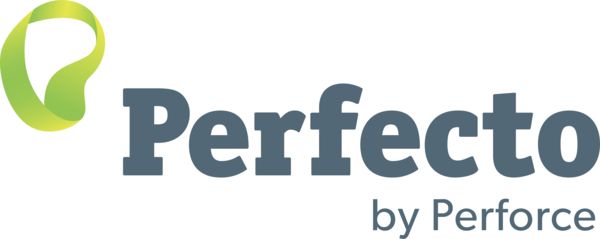HtmlUnit Remote: Acquiring Remote HtmlUnitDriver Session in Selenium 4 Grid
Categories:
HTMLUNIT REMOTE
The HtmlUnit Remote project implements a W3C WebDriver protocol wrapper for HtmlUnitDriver, which enables Selenium 4 Grid to supply remote sessions of this headless browser.
Background
To eliminate behavioral differences between local and remote configurations, the Selenium Foundation framework always acquires browser sessions from a Grid instance, managing its own local grid instance when not configured to use an existing grid. Selenium 3 Grid could be configured to supply HtmlUnitDriver sessions, supported by special-case handling within the Node server itself. This handling was not carried over into Selenium 4 Grid, which was completely re-engineered with new architecture and vastly expanded capabilities.
The lack of HtmlUnitDriver support in Selenium 4 Grid necessitated reconfiguring the Selenium Foundation project unit tests from using this Java-only managed artifact to using a standard browser like Chrome, an external dependency that requires additional resources and imposes additional risks of failure.
The driver service implemented by HtmlUnit Remote enables Selenium 4 Grid to supply HtmlUnitDriver sessions.
Project Rationale
My initial objective for creating HtmlUnit Remote was to retain feature parity in Selenium Foundation for the set of browsers supported with Selenium 3 and Selenium 4. Although I could configure my unit tests to target a conventional browser, I also wanted to avoid additional external dependencies with associated risks.
Once I began investigating the features and functionality I would need to enable Selenium 4 Grid to supply HtmlUnitDriver sessions, I recognized an additional benefit this project could provide - comprehensive standardized configurability.
HtmlUnitDriver Configuration
All remote drivers are configured via a standard Selenium feature - the Capabilities object. Prior to the HtmlUnit Remote project, many of the options of HtmlUnit could not be accessed or modified via the Capabilities API. These were only available via custom HtmlUnitDriver methods, and the way that non-standard capabilities had been added to the Capabilities object didn’t conform to the W3C specification.
This meant that the initial phase of the HtmlUnit Remote project was to implement a comprehensive W3C-compliant configuration object - the HtmlUnitDriverOptions class. This class extends AbstractDriverOptions, adding driver-specific capabilities under an extension named garg:htmlunitOptions. Support for this class provides full configurability of all HtmlUnitDriver options through the standard Capabilities API.
This standardized configuration API has been incorporated directly into HtmlUnitDriver, providing the core implementation for manipulating every driver setting. To maintain backward compatibility, all of the existing constructors and configuration methods have been retained, reimplemented to use this new core API.
W3C Remote Protocol Wrapper
With full standardized configurability in place, the next step was to create a server that implements the W3C WebDriver protocol. The HtmlUnitDriverServer functions as a remote protocol wrapper around one or more HtmlUnitDriver sessions, performing the following tasks: * Create and manage driver sessions * Route driver commands to specified driver sessions * Package driver method results into HTTP responses
HtmlUnit Remote Packaging
Rather than bulk up the existing driver with remote-specific features, HtmlUnitDriverServer and associated facilities are packaged in a companion htmlunit-remote artifact. In addition to the server, this artifact defines a driver information provider (HtmlUnitDriverInfo), a driver service (HtmlUnitDriverService), and a custom slot matcher (HtmlUnitSlotMatcher).
Connecting to the Grid
Next up is HtmlUnitDriverInfo, which specifies the basic characteristics of the driver and provides a method that creates a driver session with specified capabilities. This class implements the standard WebDriverInfo interface.
With availability of HtmlUnitDriver advertised by this information provider, Selenium 4 Grid nodes can be configured to provide driver sessions:
htmlunit.toml
[node]
detect-drivers = false
[[node.driver-configuration]]
display-name = "HtmlUnit"
stereotype = "{\"browserName\": \"htmlunit\"}"
[distributor]
slot-matcher = "org.openqa.selenium.htmlunit.remote.HtmlUnitSlotMatcher"
The selenium-server JAR doesn’t include the HtmlUnitDriver artifacts; these need to be specified as extensions to the grid class path via the --ext option:
java -jar selenium-server-<version>.jar --ext htmlunit-remote-<version>-grid-extension.jar standalone --config htmlunit.toml
The grid-extension artifact provides all of the specifications and service providers required to enable Selenium 4 Grid to supply remote sessions of HtmlUnitDriver. This artifact combines htmlunit-remote with htmlunit3-driver, htmlunit, and all of their unique dependencies.
Implementation Details
HtmlUnit Remote provides the following elements:
- HtmlUnitDriverInfo - This class informs Selenium 4 Grid that HtmlUnitDriver is available and provides a method to create new driver instances.
- HtmlUnitSlotMatcher - This custom slot matcher extends DefaultSlotMatcher, indicating a match if both the slot stereotype and requested browser capabilities specify
htmlunitas the browser name. - HtmlUnitDriverService - This class manages a server that hosts instances of HtmlUnitDriver.
- HtmlUnitDriverServer - This is the server class that hosts HtmlUnitDriver instances, enabling remote operation via the W3C WebDriver protocol.
In operation, HtmlUnitDriverService is instantiated by Selenium 4 Grid node servers that are configured to support HtmlUnitDriver. Unlike other driver services, which launch a new process for each created driver session, HtmlUnitDriverService starts a single in-process server that hosts all of the driver sessions it creates.
This is a guest blog post by Scott Babcock









